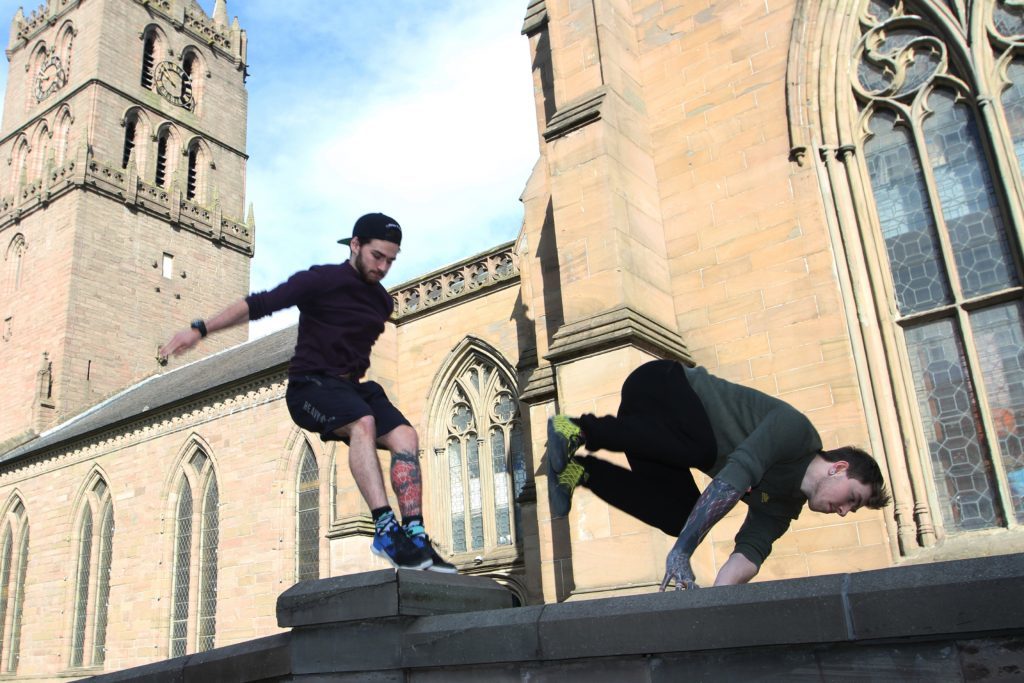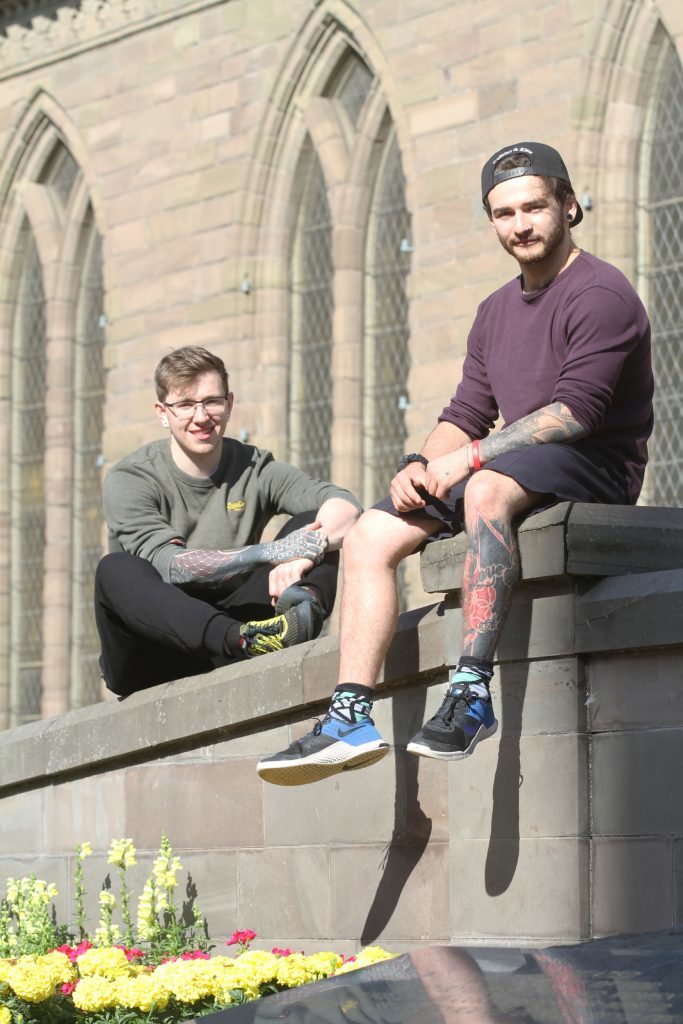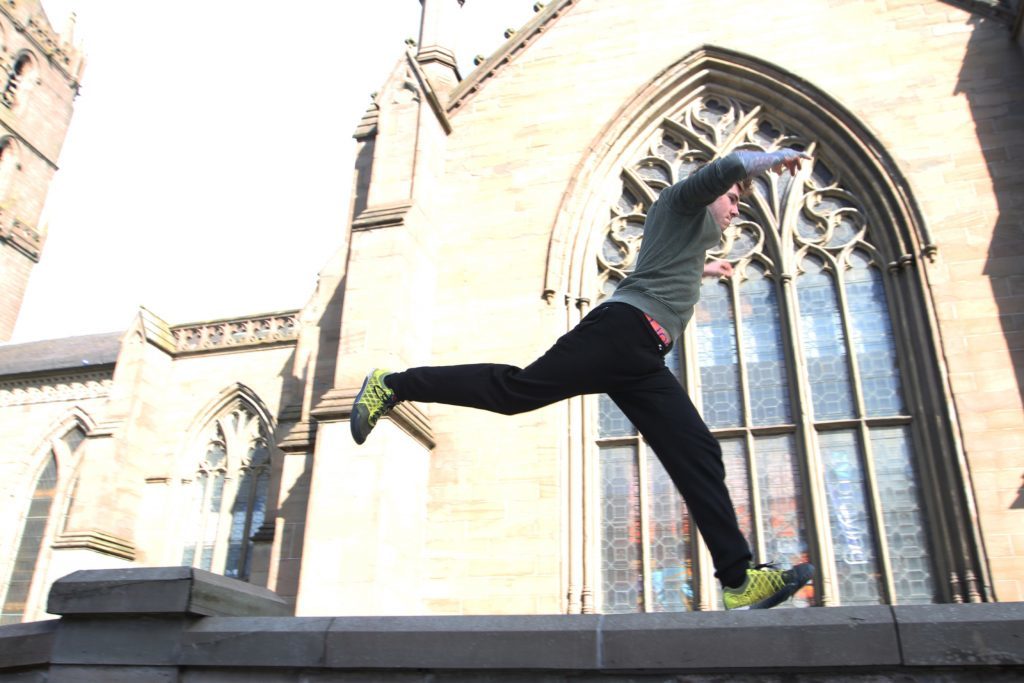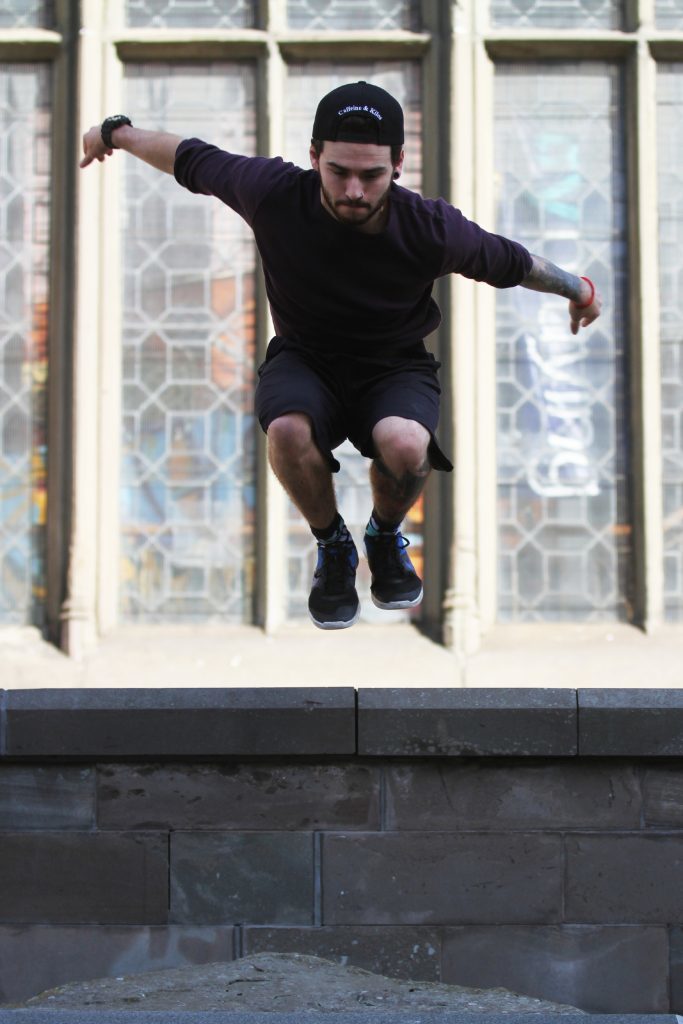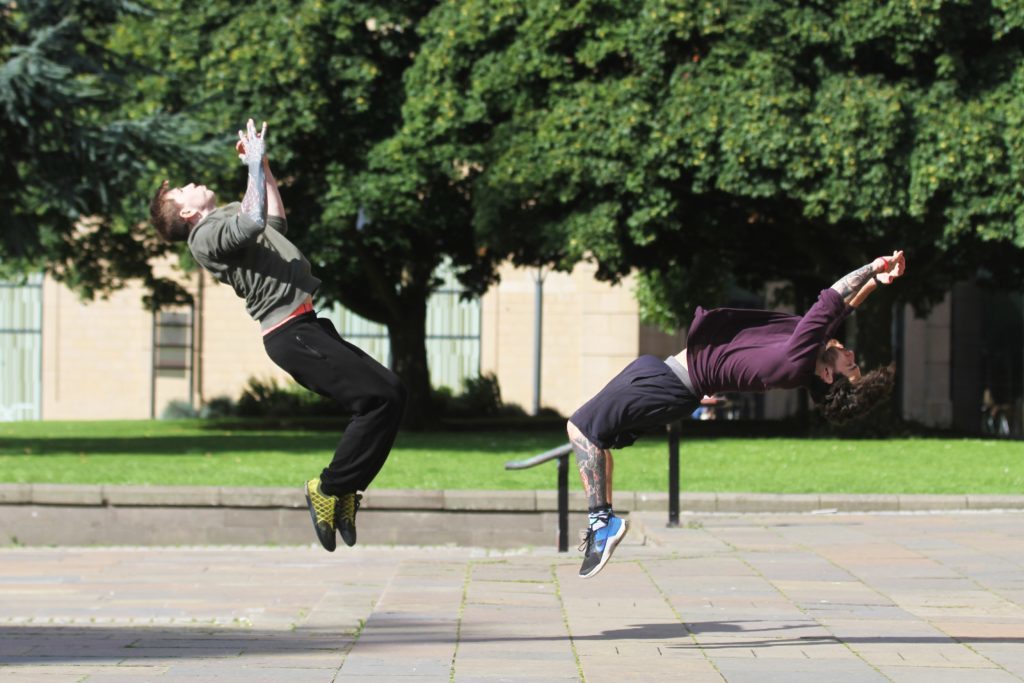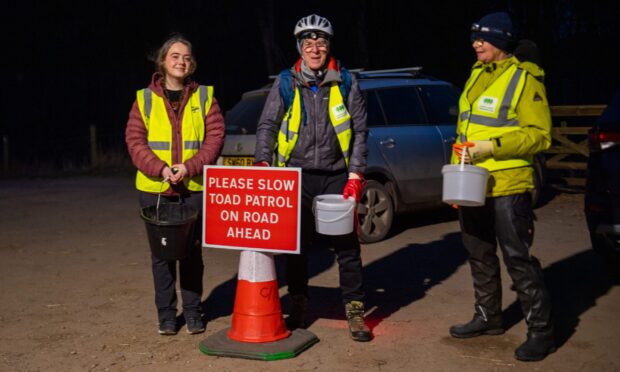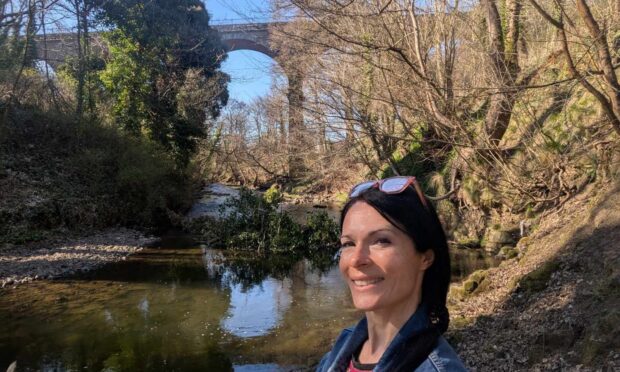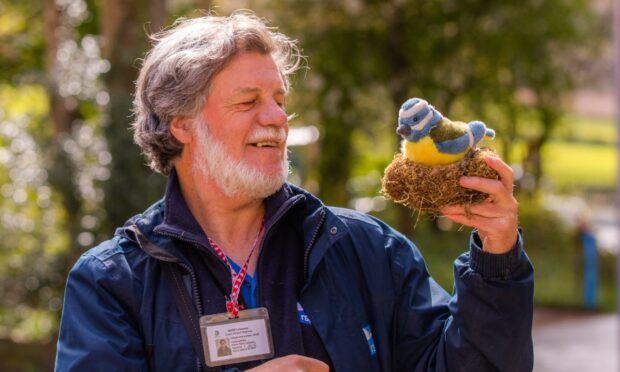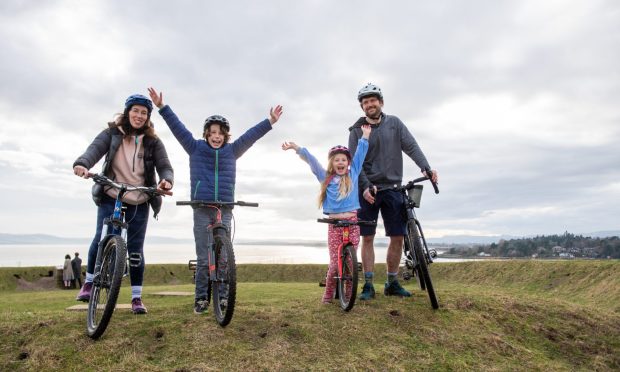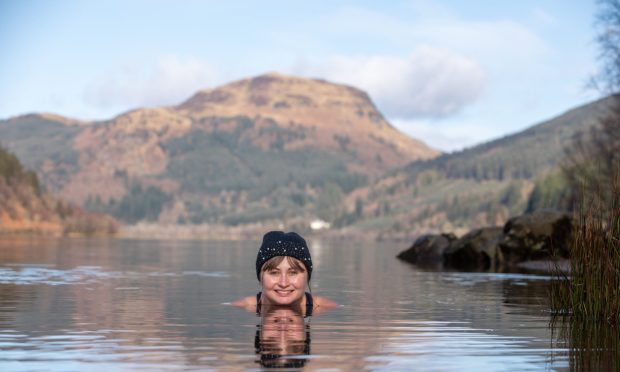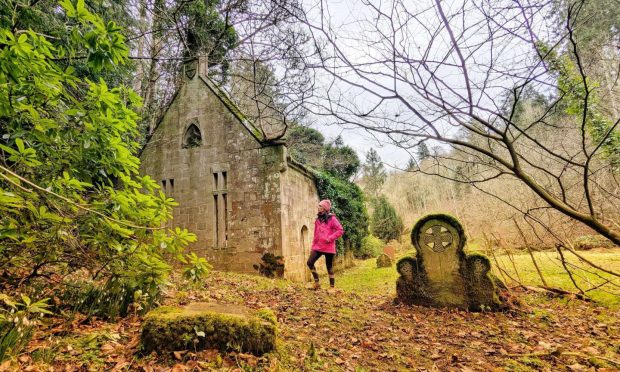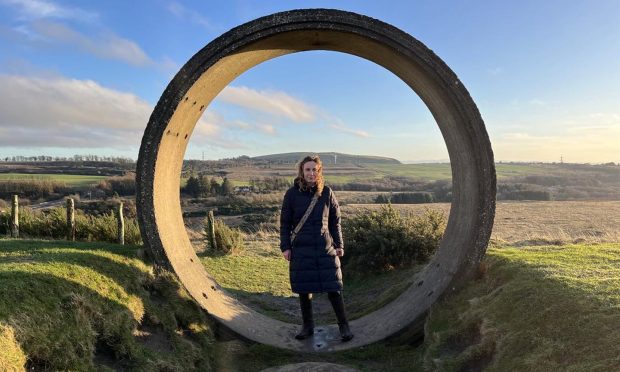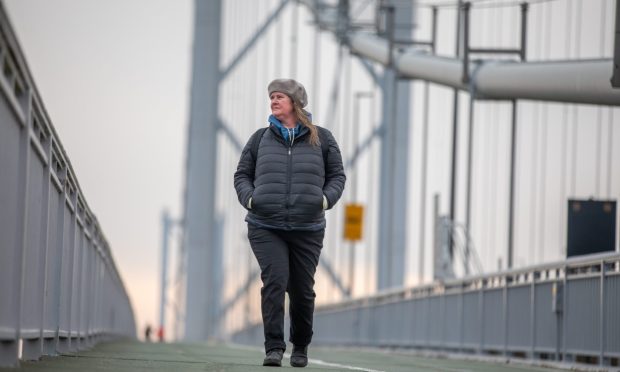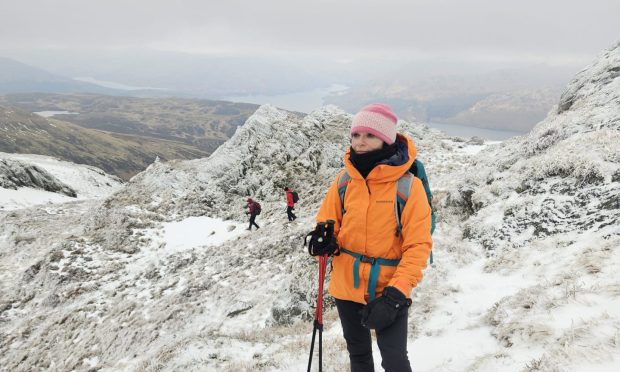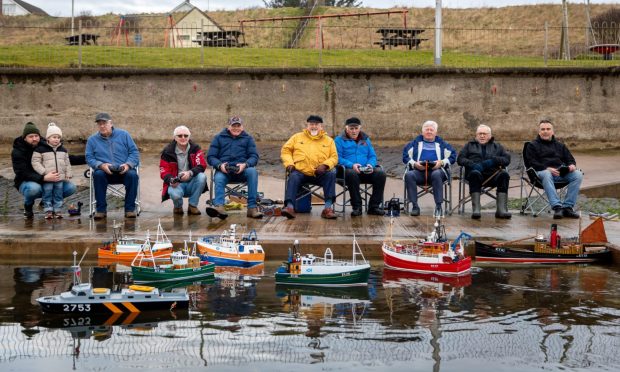Parkour involves running, climbing, swinging, jumping, rolling and vaulting across “urban furniture”. Gayle Ritchie meets two Dundee lads proving their parkour prowess…
Dundee parkour addicts Ramsay Mayer and Liam Pullar view the world as a giant playground.
They go over walls, not round them. They use stair railings instead of taking the stairs. They climb cranes and impossibly tall buildings.
When I hook up with the lads outside the Steeple Church on Dundee’s Nethergate, they’re keen to show me some moves.
As they perform backflips, spins and vault over a wall, a small audience forms to watch.
Having travelled the world looking for “urban furniture” on which to practice their art, they’re used to being the centre of attention.
Ramsay, 22, tells me he got into parkour – also known as free running – five years ago.
“Having seen it in loads of movies, I started off just playing about on walls,” he says.
“It’s the most natural thing in the world to run, jump and climb, and the entire world becomes a playground when you look at it differently.
“I’m now lucky enough to have parkour as both a hobby and a job.”
Ramsay and Liam met up at Fife Parkour back in 2011, and started coaching the sport in schools.
While Ramsay, who runs the Dundee Parkour Facebook site, is a part-time lecturer and barista, Liam is a personal trainer and CrossFit coach.
For those who know nothing about parkour, Ramsay describes it as “using your own body and mind to overcome obstacles”.
There are never any harnesses or nets involved so clearly, there’s a huge element of risk but the lads are adamant it’s only as dangerous as they make it.
“When we size up a building or a jump, we need to be 110% sure we can do it,” says Liam, 24.
“You only get one chance. Ultimately, a jump up at seven storeys is the same as at ground level.
“It’s very much about asking ourselves, ‘can we do this?’ and never being afraid to say no.”
The lads, who both coach parkour in schools, try to make their “play time” as safe for themselves and others as they can.
That’s why they do some of their climbs at night although they insist this isn’t because they’re trying to be secretive about it.
“It’s to save causing stress to people who might see us and get upset, or worry what we’re doing is illegal,” says Liam.
“We’ve done some crazy stuff all over the world, but climbing the V&A right here in Dundee was a good one.”
Both Ramsay and Liam are keen to stress that anyone can do parkour.
“The great thing about it is that it’s scalable,” says Liam.
“We can teach you how to get up and over a little wall, and then you get higher and higher, putting in bigger drops and setting challenges for yourself.
“I was a skinny kid who watched a lot of video games while Ramsay was, by his own admission, quite a lazy child until he found parkour.
“It’s made us stronger and fitter and given us loads of confidence. If you can clear your mind to jump off a building, you can take this into everyday life, using it to calm your nerves.”
How to get into parkour? The lads recommend checking out the Dundee Parkour Facebook page and turning up for “jams”.
“We usually meet up randomly and we move from spot to spot,” says Ramsay.
“Often we’ll turn up in a new city and ask if people will show us around and train with us. We’ve met a lot of people that way and learned a lot of tricks.
“There’s a lot of watching other folks’ moves but ultimately we all move differently and have different styles and influences. There’s no right or wrong.”
The lads are so talented at what they do that they’ve appeared on stage, in a fight scene in a James Bond production at Whitehall Theatre.
“Lots of parkour guys do stunt work in films, so if the opportunity ever comes up, we’ll grab it,” winks Ramsay.
